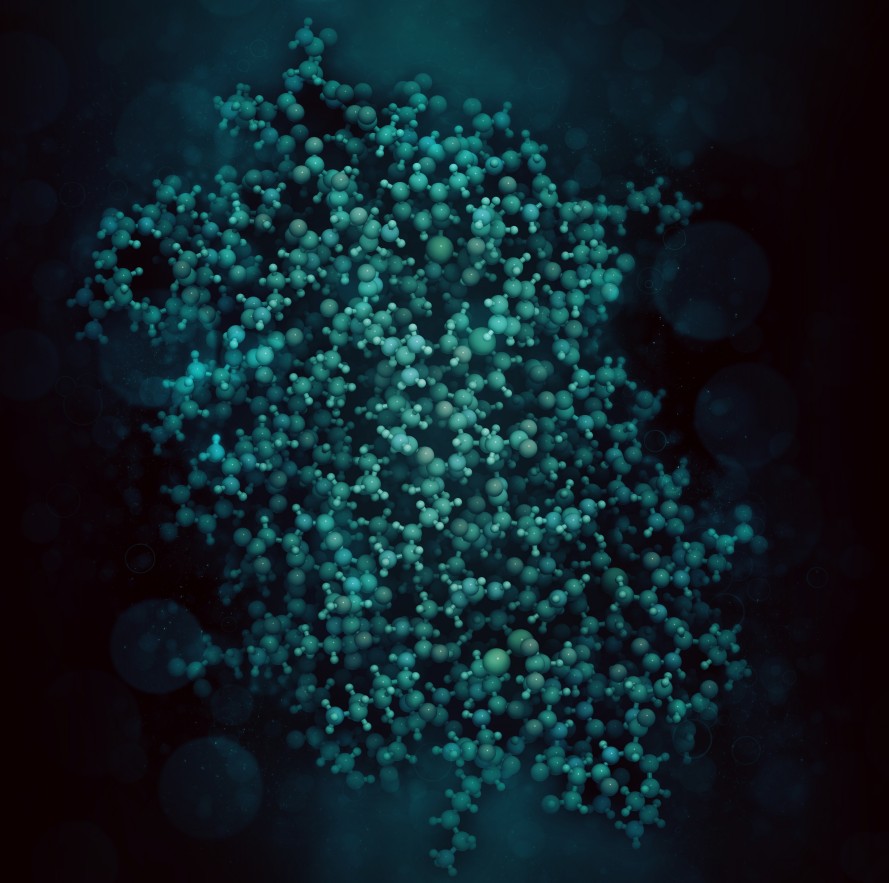Anti-inflammatory peptides are usually short chain peptides composed of amino acids, which have the ability to reduce inflammatory responses and modulate the immune system. The structure of anti-inflammatory peptides can vary depending on their origin and design. By understanding and adjusting the structure of anti-inflammatory peptides, their stability, bioavailability and activity can be improved to further optimize their anti-inflammatory efficacy.
 Fig. 1. Anti-inflammatory peptides-IL-6 receptor peptide.
Fig. 1. Anti-inflammatory peptides-IL-6 receptor peptide.
List of Anti-inflammatory Peptides
There are many types of anti-inflammatory peptides, such as interleuin-4 (IL-4), IL-10, LL-37, transforming growth factor-β (TGF-β), TGF-p1, etc. The following are typical anti-inflammatory peptides.
- LL-37
LL-37 consists of 18 amino acid residues, which are realized through the transcription of the CAMP (Cathelicidin Antimicrobial Peptide) gene and subsequent shearing of the protein. LL-37 can promote the resolution of inflammation and regulate the immune response by inhibiting the production of pro-inflammatory cytokines and chemokines. - Interleukin-6 Receptor Peptide
Interleukin-6 (IL-6) receptor peptide is a peptide that binds to the interleukin-6 receptor. The IL-6 receptor is a complex consisting of two subunits, including the IL-6 receptor alpha chain (IL-6Rα) and a signaling subunit (gp130). IL-6 receptor peptides can be synthesized by synthetic methods of artificially synthesized peptides, and are usually designed as competitive inhibitors that bind to IL-6 and block its binding to the receptor, thereby inhibiting IL-6 signaling. - α-MSH (α-melanocyte-stimulating hormone)
α-MSH is a neuroendocrine hormone composed of 13 amino acid residues with potent inhibitory effects on inflammation. It produces most of its pharmacological effects in vivo through an anti-inflammatory mechanism, which is mainly characterized by the down-regulation of inflammatory factor levels and the up-regulation of anti-inflammatory factor levels. It mainly prevents the degradation of IKB protein by increasing the concentration of intracellular CAMP, thus inhibiting the expression of nuclear factor NF-κB gene and regulating the inflammatory response from the level of gene regulation.
Mechanism of Action of Anti-inflammatory Peptides
- Inhibit the release of inflammatory mediators. Anti-inflammatory peptides can inhibit the inflammatory response by reducing the production and release of inflammatory mediators (e.g. cytokines, chemokines, etc.).
- Regulation of immune cell activity. Anti-inflammatory peptides can also regulate the function of immune cells, thereby reducing excessive immune activity and inflammatory responses.
- Promote tissue repair. Certain anti-inflammatory peptides have the ability to promote tissue repair and regeneration, ameliorating inflammation-related tissue damage by promoting cell proliferation and reducing fibrosis.
Preparation of Anti-inflammatory Peptides
- Enzymatic Reaction
Most anti-inflammatory peptides are prepared by macromolecular protein precursors. The cleavage of macromolecular proteins can be carried out by specific enzymes, either intracellularly or in vitro, to produce anti-inflammatory peptides. - Chemical Synthesis
Anti-inflammatory peptides can be synthesized by solid phase synthesis or liquid phase synthesis. The basic steps of the synthesis are: determination of the desired amino acid sequence of the anti-inflammatory peptide and introduction of a protecting group. The target amino acid is reacted with a chemical reagent to activate the carboxyl group of the amino acid. The activated amino acid is condensed with the peptide chain into which the protecting group is introduced and the activation and condensation reactions are repeated. Finally, the protective groups are removed to obtain the anti-inflammatory peptide. - Enzyme Modification
By means of modifications such as phosphorylation, mannosylation, and methylation, the activity, stability, and hydrophilicity of a peptide can be altered, thereby affecting its anti-inflammatory activity. - Biotransformation
Anti-inflammatory peptides can also be produced through a biotransformation process. Through enzyme catalysis, protein precursors can be converted into peptides with anti-inflammatory activity.
Applications of Anti-inflammatory Peptides
- Inflammatory diseases. Anti-inflammatory peptides can be used in various types of inflammatory diseases, including rheumatoid arthritis, allergic diseases, and gingivitis.
- Skin inflammation. Anti-inflammatory peptides can be used in the treatment of psoriasis, eczema and other skin-related inflammatory diseases.
- Chronic pain management. Anti-inflammatory peptides can also inhibit chronic pain and be used in chronic pain management as an alternative or adjunctive treatment.
- Neuroprotection. Anti-inflammatory peptides can also be used for neuroprotection and treatment of neuroinflammatory diseases such as Alzheimer's disease and Parkinson's disease.
 Fig. 1. Anti-inflammatory peptides-IL-6 receptor peptide.
Fig. 1. Anti-inflammatory peptides-IL-6 receptor peptide.